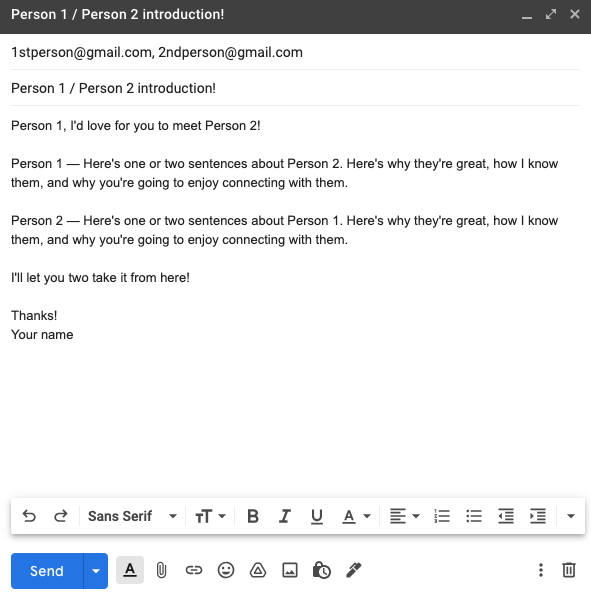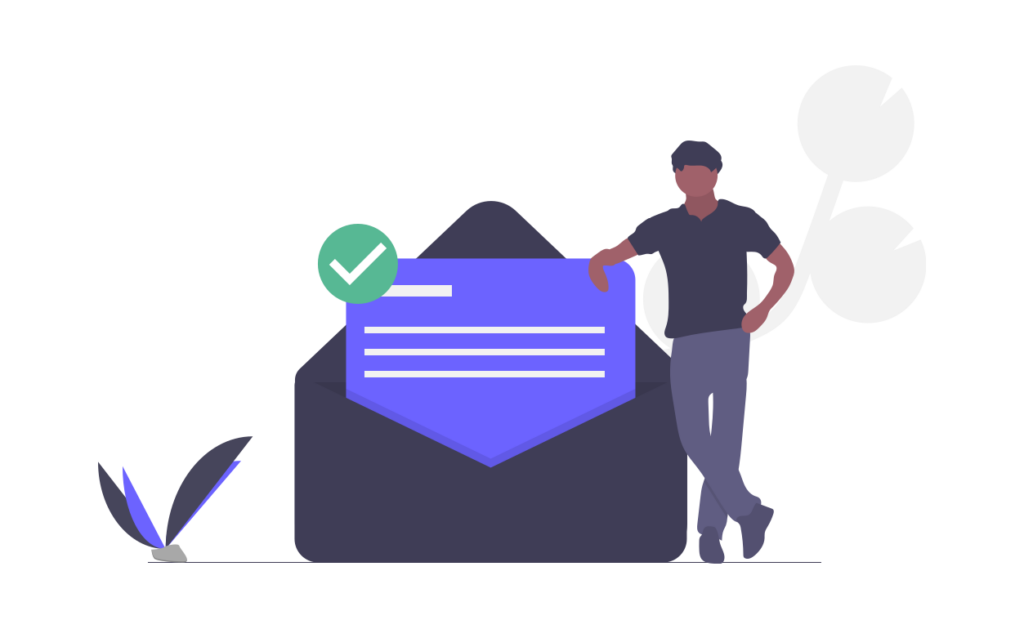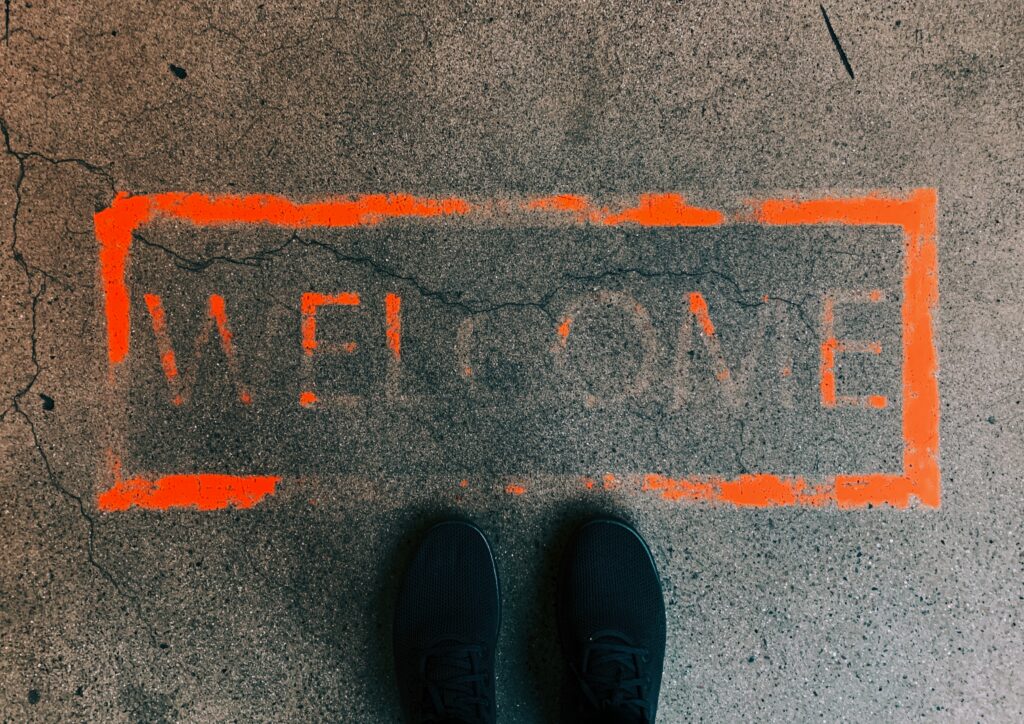
One of my absolute favorite things is getting the chance to connect two people who don’t know each other — but who I know are immediately going to hit it off. In a typical week, I’ll make a handful of these intros, so I’ve had quite a bit of practice in getting it right. Here’s what I’ve learned about making an introduction that leads to impact.
Step 1 — Reach out to both parties and make sure there’s mutual interest
You’d be surprised how often an intro shows up in your inbox with no previous warning! When those arrive, you often feel like someone is imposing on you, even if that’s not their intent.
But there’s a simple fix: First reach out to make sure each person is interested, understands the nature of the intro, and has the time do so. Is the person you’re being connected to looking for professional help? For a a 20-minute call? For a reference or advice? You’re setting up a blind date here, so it’s up to you to make sure each party is interested and excited to come to the table.
Step 2 — Follow a simple formula for the intro
Here’s what every one of my intros looks like:

Keep it brief, be positive, and make sure each party leaves feeling like you’ve presented them in the best possible light. If there’s a small point of connection that might spark a conversation — say, there’s a mutual friend in common, or they both have a shared interest — mention that to help them kick off the conversation.
One more thing: Make sure you’re introducing them at the right email address. Maybe this person wants to be connected via their personal email, or maybe this is for business and they want an intro at their work email. Double check to make sure you’re introducing them in the correct space.
Step 3 — If you’re the one being introduced, bcc the person who introduced you!
Here’s how I typically reply to an intro: “Thanks, Person Who Introduced Us, for making the intro! I’m moving you to bcc to spare your inbox.” It lets them know you’ve taken the reins here, but also keeps them from having to witness two people make plans on a lengthy email thread. This person’s taken the time to make an intro for you — the least you can do is keep them from receiving a dozen extra emails in the process.
And that’s it! Connect with both parties, make the intros, and make sure you get moved to bcc. Do that, and you’ve just made a proper digital introduction.
———
That photo of a handshake comes via Sincerely Media and Unsplash.


